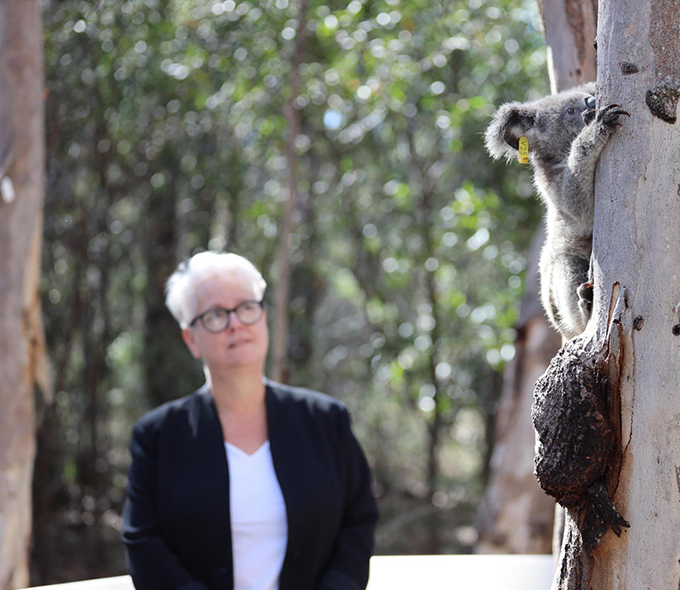Payroll jobs rose 0.3 per cent in the month to 17 September 2022, according to figures released today by the Australian Bureau of Statistics (ABS).
Bjorn Jarvis, head of labour statistics at the ABS, said: “Payroll jobs have continued to grow slowly across 2022, with average monthly growth over the past six months of 0.3 per cent. This reflects the sustained tightness in labour market conditions across the country.
“The growth in the month to mid-September 2022 varies from previous years, due to differing labour market conditions at the time. In mid-September 2021, payroll jobs fell due to Delta-related lockdowns in some jurisdictions, and rose in mid-September 2020 reflecting the recovery from initial pandemic impacts.”
| 2020 (pts) | 2021 (pts) | 2022 (pts) | |
|---|---|---|---|
| week 0 | 92.7 | 96.1 | 99.3 |
| week 1 | 95.2 | 97.3 | 99.9 |
| week 2 | 96.7 | 99.5 | 102.1 |
| week 3 | 97.5 | 100.5 | 103.6 |
| week 4 | 98.0 | 101.0 | 104.4 |
| week 5 | 98.7 | 101.6 | 104.9 |
| week 6 | 99.1 | 102.3 | 105.5 |
| week 7 | 99.5 | 102.6 | 105.2 |
| week 8 | 99.5 | 103.0 | 105.1 |
| week 9 | 99.9 | 103.2 | 105.4 |
| week 10 | 100.0 | 103.6 | 106.4 |
| week 11 | 99.0 | 103.8 | 106.8 |
| week 12 | 95.5 | 103.6 | 106.7 |
| week 13 | 93.0 | 102.8 | 106.5 |
| week 14 | 91.7 | 102.4 | 106.6 |
| week 15 | 91.7 | 102.6 | 105.9 |
| week 16 | 92.2 | 102.9 | 105.5 |
| week 17 | 92.7 | 103.3 | 106.1 |
| week 18 | 93.4 | 103.7 | 106.6 |
| week 19 | 94.1 | 103.9 | 106.9 |
| week 20 | 94.5 | 104.1 | 107.2 |
| week 21 | 94.8 | 103.8 | 107.3 |
| week 22 | 95.8 | 103.4 | 107.2 |
| week 23 | 96.2 | 103.6 | 107.6 |
| week 24 | 96.3 | 103.8 | 108.1 |
| week 25 | 96.2 | 103.5 | 108.8 |
| week 26 | 97.5 | 103.4 | 109.1 |
| week 27 | 98.6 | 104.2 | 109.5 |
| week 28 | 98.7 | 103.9 | 108.7 |
| week 29 | 98.9 | 102.7 | 108.5 |
| week 30 | 99.2 | 102.9 | 108.7 |
| week 31 | 99.2 | 102.7 | 108.1 |
| week 32 | 99.1 | 102.6 | 108.4 |
| week 33 | 99.2 | 101.9 | 108.3 |
| week 34 | 99.3 | 101.4 | 108.3 |
| week 35 | 99.6 | 101.5 | 108.2 |
| week 36 | 100.0 | 102.1 | 108.4 |
| week 37 | 100.2 | 102.5 | 108.6 |
| week 38 | 100.0 | 102.3 | |
| week 39 | 99.3 | 102.0 | |
| week 40 | 99.5 | 102.4 | |
| week 41 | 100.4 | 104.1 | |
| week 42 | 100.7 | 105.2 | |
| week 43 | 100.9 | 106.1 | |
| week 44 | 101.3 | 106.7 | |
| week 45 | 102.0 | 107.1 | |
| week 46 | 102.4 | 107.6 | |
| week 47 | 102.7 | 107.9 | |
| week 48 | 103.2 | 108.2 | |
| week 49 | 103.3 | 108.2 | |
| week 50 | 102.6 | 107.4 | |
| week 51 | 98.9 | 103.7 |
Week 0 represents the week ending 4 January 2020, 2 January 2021 and 1 January 2022. Week 37 represents the week ending 19 September 2020, 18 September 2021 and 17 September 2022.
Industries
In the month to mid-September 2022, payroll jobs rose in 7 of 19 industries. The largest rises were in Education and training (up 2.0 per cent), Retail trade (up 1.4 per cent) and the Professional, scientific and technical services industries (up 1.1 per cent). Together, these industries account for almost 90 per cent of the growth in payroll jobs during this period.
These increases are likely to be largely seasonal and follow payroll jobs growth in 2020.
Over the same month in 2020, payroll jobs growth in Retail trade was particularly strong, reflecting its rapid recovery from the initial pandemic outbreak.
| 2020 (%) | 2021 (%) | 2022 (%) | |
|---|---|---|---|
| All industries | 1.0 | 0.5 | 0.3 |
| Professional, scientific and technical services | 1.4 | 1.7 | 1.1 |
| Retail trade | 3.0 | 0.1 | 1.4 |
| Education and training | 2.1 | -0.1 | 2.0 |
Month change represents the month up to the week ending 19 September 2020, 18 September 2021 and 17 September 2022.
The remaining 12 industries saw falls in payroll jobs over the month to mid-September 2022, with the largest in the Arts and recreation services (down 1.3 per cent) and the Transport, postal and warehousing industries (down 1.0 per cent).
States and territories
“Payroll jobs rose in every state and territory in the month to mid-September 2022, with the largest rises in the Australian Capital Territory and Western Australia (up 0.7 and 0.6 per cent),” Mr Jarvis said.
The Education and training industry accounted for more than a third of the payroll jobs increase over the month to mid-September across all states and territories, reflecting the seasonal high in payroll jobs ahead of the Spring school holidays.
Seasonality in wages
Wages paid rose 2.7 per cent in the month to mid-September 2022. The seasonal increase in wages was largely driven by the payment of periodic bonuses in multiple industries around September each year. As Single Touch Payroll data does not currently separate bonuses and other types of payment such as overtime from wages and salaries, it is not possible to identify underlying growth in core wages and salaries in these statistics.
The ABS acknowledges the continued support of the Australian Taxation Office in enabling the ABS to produce weekly insights into the Australian labour market from Single Touch Payroll data.








